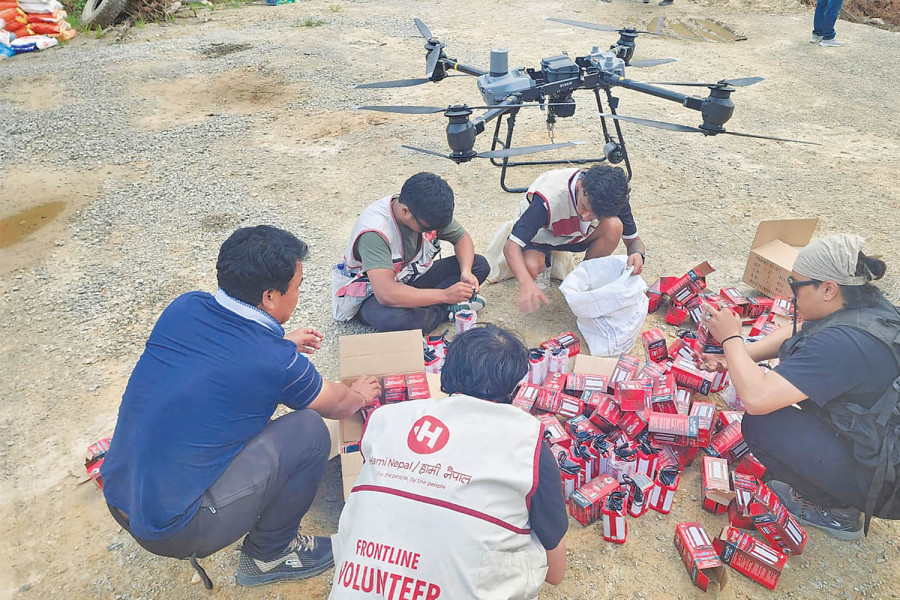Editorial
Rebuilding lives
A bottom-up post-disaster approach is needed, with local units equipped with training and funds.
Nearly two weeks after the rain-induced disasters and even as the festive season is already underway, victims in the hardest-hit areas still await rescue and relief. On Friday, the government declared several disaster-affected local units in 14 districts “disaster crisis zones” to accelerate rehabilitation, recovery and reconstruction efforts. Although this was much needed, it also leaves us wondering whether this is yet another perfunctory step. This is evident from last year’s figures, as among the 865 families displaced from landslides, only 300 have had second instalment relief to rebuild houses; the rest haven’t even started reconstruction works.
Many people in disaster-ravaged areas are living in isolation, without electricity and drinking water. Kavrepalanchowk, a hill district of Bagmati Province, has been one of the worst-affected areas by landslides and floods from the September 27 and 28 rains, which have claimed 78 lives in the district so far. Accessibility is a big hurdle for relief and rehabilitation due to the geographical remoteness of the areas and the disruption of the roads caused by floods and landslides. However, some organisations have figured out ways to address this challenge effectively.
A recent Post report from Kavrepalanchowk about how a non-profit organisation called Hami Nepal used a drone to transport relief materials to Magargaun from Kalanti in ward 12 of Panauti Municipality has kindled hope among such affected communities. The drone, which can transport goods up to 4 to 5 kilometres, took 600kg of relief materials to disaster-hit areas in the district on Sunday.
When rescue and relief workers from the central level cannot access areas post-disaster, local units must be the first responders. However, agencies under local units lack expertise and funds and are ill-prepared to tackle emerging problems. Additionally, the government lacks institutions that solely focus on enhancing the nation’s ability to manage disasters. The Department of Water-Induced Disaster Management, previously known as the Disaster Prevention Technical Centre, has been merged with other departments whose primary functions differ considerably from strengthening local capacity to handle floods and landslides.
Indeed, the government failed miserably to mitigate the impacts of a predictable disaster; it must now prioritise swift and effective post-disaster response. Although the severity of the disaster this time was unprecedented, monsoons in Nepal bring havoc every year. However, only when the disaster strikes do the authorities spring into action. Such a reactive response puts the lives of many people at risk, every single year. Many donor agencies and non-governmental and non-profit organisations have been relentlessly working to save lives since the disaster hit the communities and are better equipped and trained.
Perhaps the government can both learn and partner with them to facilitate the exchange of knowledge, skills, expertise, resources, and grassroots experiences during such a crisis. A bottom-up approach is warranted, with the local units better equipped with training, funding and awareness. Moreover, collaboration between local and national units must be strengthened for effective disaster response and communication.
As the declaration of disaster “crisis zone” remains in effect for three months and authorities plan to restore roads and private buildings while providing rehabilitation and relief in this time frame, they must expedite their actions and ensure that victims do not face a challenging winter ahead.




 7.12°C Kathmandu
7.12°C Kathmandu












%20(1).jpg&w=300&height=200)

